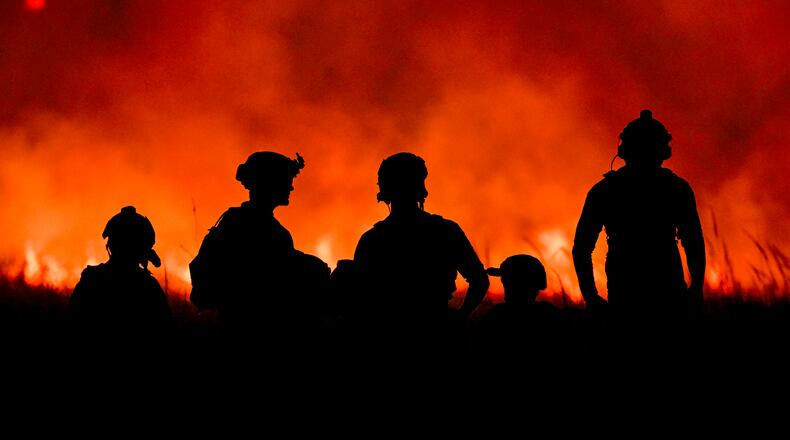“This increase is not statistically significant,” said Liz Clark, the director of the Pentagon’s Defense Suicide Prevention Office. The report states “not statistically significant” means there is low confidence that this is a true difference.
The rate is calculated based on an active-duty force of about 1.28 million troops, about 330,000 in the Reserve and nearly 430,000 in the National Guard.
For years, the Pentagon has struggled to bring down the number of suicides in the ranks. The Defense Department began collecting and reporting quarterly surveillance data on service member suicides in 2018 to help guide prevention efforts.
Overall, there were 523 reported suicides in 2023, compared with 493 in 2022. The number of active-duty troops who died by suicide increased to 363 from 331.
The Air Force, Army and Navy all saw an increase in suicide rates while the Marine Corps stayed about the same. The suicide rate among Reserve troops increased 8% while the National Guard rate decreased by about 5%, according to the report.
“Similar to previous years, service members who died by suicide were largely young males under the age of 30. This group accounted for 61% of suicide deaths in the active component,” Clark said.
Since 2011, suicide rates have increased among active-duty troops but remained relatively stable for the Reserve and National Guard troops, according to the report.
The Defense Department in recent years has aimed to improve mental health care access for troops, amid increases in suicide rates and outcry from members of Congress and others.
In 2022, Defense Secretary Lloyd Austin approved the establishment of the Suicide Prevention and Response Independent Review Committee, which made 127 recommendations of near- and long-term solutions to address suicides in the ranks.
The independent panel recommended the department implement a series of gun safety measures to reduce suicides in the force, including waiting periods for the purchase of firearms and ammunition by service members on military property.
The panel said the department should also raise the minimum age to 25 for service members to buy guns and ammunition and should require anyone living in military housing to register privately owned firearms. In addition, the panel said the department should restrict the possession and storage of privately owned firearms in military barracks and dormitories.
Austin released a memo September 2023 outlining more than 100 recommendations to be implemented by 2030 to address the suicide crisis in the military. Some of the recommendations included expanding telehealth services, increasing appointment availability by revising the mental health staff model, launching a comprehensive public education campaign on firearm safety, and updating the amount of suicide prevention training. The department chose not to implement the firearm changes at the time.
“The bulk of our efforts ... get at secure storage of their firearms, particularly giving service members more options,” said Timothy Hoyt, deputy director of the Pentagon’s Force Resiliency Office. “We feel that focusing on secure storage strikes a better balance between what might have been recommended and taking into account that firearms are the tools of military training.”
The Pentagon in 2024 completed 20 of the 83 recommendations by the commission. Austin said in a prepared statement issued Thursday that the Pentagon will “make an unprecedented investment in suicide prevention.” Hoyt said the budget for 2025 is projected to be about $250 million for initiatives.
“We are dedicated to fighting for our service members by fostering supportive team cultures and tackling the stigma of asking for help and other barriers to care. There’s still much more work to do and we won’t let up,” Austin said.
The 2023 suicide report also included data about military family suicides for 2022. The data shows fewer family members died by suicide in 2022 than the previous year, a 9% decrease. While there are far fewer male spouses, they make up nearly half of the suicide deaths.
In addition, the military services are hiring personnel to staff prevention programs and about 1,000 professionals have been hired with a goal of 2,500 by 2028.
The national suicide and crisis lifeline is available by calling or texting 988. There is also an online chat at 988lifeline.org.
About the Author
